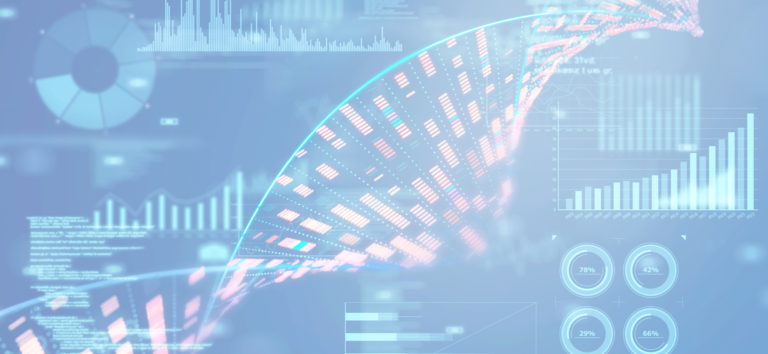In the marketing technology space, the adoption of customer data platforms (CDPs) is a trend that is picking up steam, and it’s easy to see why. A CDP serves as a central repository for all of a company’s customer data—enabling teams to capture, process, and unify data and then activate it through various marketing channels, such as email, social and display ads, and sales campaigns. And even before COVID-19, understanding customers using data from all of these channels was central to competing effectively. Now it can help companies figure out how to rework and personalize customer journeys, even when customers are avoiding physical stores.
The CDP industry was already experiencing rapid growth in the last few years. Revenue in the industry was an estimated $1 billion in 2019 and is expected to reach at least $1.3 billion in 2020, according to data from the CDP Institute.
As the global head of marketing for an enterprise CDP, I have seen a noticeable shift in how business leaders are prioritizing their customer data. Many companies are starting to see the competitive advantage of unified, transparent customer data.
But with all of the martech options available in the marketplace, what is driving the current demand for CDPs? Why do companies want to centralize their customer data now, instead of five years ago? I believe these four driving forces are responsible for the rise of CDPs and will continue to be important going forward.
1. The Need To Deliver An Omnichannel Experience
Now more than ever, companies have to compete with a better customer experience. Your customers want to feel understood and valued when they interact with your brand. To deliver personalized messaging and flexible support, you need full visibility into each customer’s interests and engagement across all marketing channels.
Are they a new or returning customer? What have they recently browsed or purchased? Have they had support issues in the past? What are their preferred marketing channels?
CDPs consolidate all of this information in ways that CRMs or DMPs can’t, helping your brand develop personalized, consistent messaging for customers on all online and offline channels. If a customer visits your website and searches for a product—maybe even adds an item to their shopping cart—but doesn’t buy anything, you want that information when reaching out to them in the future. Every interaction you have with them, whether through your mobile app, email or social media, should line up with their individual interests and preferences. This is particularly true in retail and automotive industries, where customers have been forced to buy in ways that limit in-store interaction.
2. New Data Privacy Regulations
Data privacy regulations, like GDPR in the EU and CCPA in California, has changed how organizations can collect and use consumer data. More governments are likely to pass similar laws in the future, and it’s crucial for companies to know where all of their customer data is housed and how they are keeping it safe.
Using a CDP is becoming an important part of a company’s data protection strategy, allowing brands to develop safe, compliant-ready lists—removing contacts based on locations or preferences, for example. To meet privacy regulations, you need both consent management and customer data management tools. For example, if a customer gives your company consent to collect data through cookies on your website, but then later requests that you delete all of their data, it’s important to have it consolidated and organized in one location.
3. The Ability To Prove Marketing ROI
Marketers have often struggled to show ROI on much of their spend, for reasons including attribution issues, siloed data and a lack of analysts and data scientists on their teams to get the reporting right. For marketers to demonstrate ROI to leadership, they need to link campaigns and spend to key indicators such as a rise in engagement and leads, a growing customer base and an increased share of wallet. With more comprehensive data across channels, as well as a fuller picture of prospects and customers, marketers are finally able to systematically track return on investment—something that previously required one-off data-gathering and analysis exercises to measure.
In addition to being able to regularly track and report on marketing’s overall impact, having more comprehensive data available also allows marketers to quickly run more marketing experiments. For example, a segment can be created and presented with a new offer, different messaging or communication via a new channel and compared against a control group to measure the impact of this new approach. This allows marketers to move swiftly and improve results by testing hypotheses and running experiments before making major changes to their campaign strategies.
CDPs form the data foundation for these analytics, dashboards and tests, giving your company a better overall picture of your investment and impact. Instead of having different teams operating in siloed systems, you can access metrics across channels and campaigns, as well as a complete view of the customer base. Centralized data makes it easier to quantify concepts like customer lifetime value or the ROI of a particular campaign.
4. The Expansion of AI/ML
Companies are collecting and storing massive amounts of data, far beyond what the human mind can feasibly understand. AI and ML use automated and predictive capabilities to process and analyze data to spot patterns, make predictions and provide recommendations that are valuable for marketers.
AI and ML require large amounts of data to function. While it’s possible to gather enough data to process within an individual marketing channel, it’s far more effective to provide your algorithms with data from a variety of channels. A CDP collects full customer data from different systems in one place to allow your algorithms to determine high-value customers, next best actions, product recommendations and customers likely to churn or purchase. Wide-ranging data helps you make better choices, run better campaigns and automate more intelligently.
Marketing technology is constantly evolving, and it can be difficult to keep up with the next best thing. CDPs are a relatively new but critical piece of your tech stack. They help you prioritize your customer data to make the most of your marketing investments, future-proof your company, and stay ahead of privacy and compliance regulations.
Editor’s note: The above article first appeared on Forbes.com as part of the Forbes Communications Council series, which you can view here.



